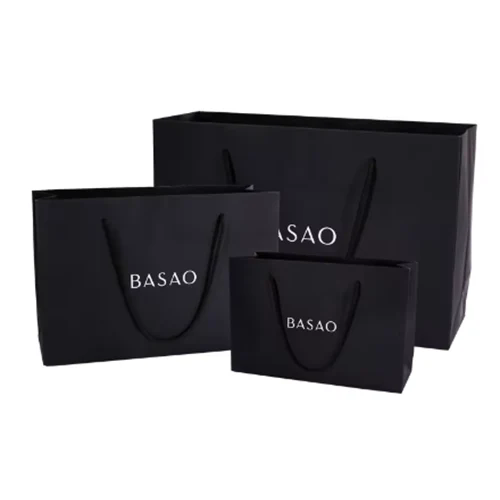Components of a Paper Bag
2024-05-28
A paper bag is a type of packaging made primarily out of paper. It is commonly used for carrying and transporting items such as groceries, gifts, clothing, and more. Paper bags come in various sizes, shapes, and designs to accommodate different needs and preferences. Here's an overview of the typical components and manufacturing process of a paper bag:
Components of a Paper Bag:
1. Paper Material: The main component of a paper bag is paper, which can vary in thickness, weight, and quality. Common types of paper used for paper bags include kraft paper, recycled paper, and coated paper.
2. Handles: Paper bags may feature handles for easy carrying. Handles can be made from paper (twisted or flat), rope, fabric, or even plastic for added strength and convenience.
3. Printing: Paper bags can be printed with various designs, logos, branding elements, or promotional messages using techniques such as offset printing, flexography, or digital printing.
4. Reinforcements: Depending on the intended use and weight capacity, paper bags may include reinforcements such as cardboard or plastic inserts at the bottom or along the sides to provide extra strength and stability.
Manufacturing Process of a Paper Bag:
1. Paper Selection: The manufacturing process begins with selecting the appropriate type and quality of paper based on the desired strength, appearance, and functionality of the paper bag.
2. Printing (optional): If printing is required, the selected paper may undergo printing to add designs, logos, or other graphics onto the surface.
3. Cutting: The printed or plain paper is then cut into sheets of the appropriate size for making the paper bags. Precision cutting ensures uniformity and consistency in the final product.
4. Folding and Gluing: The cut paper sheets are folded and glued along specific lines to form the basic structure of the paper bag. This process may be automated using machinery for efficiency and accuracy.
5. Handle Attachment: If the paper bag requires handles, they are attached at this stage. Handles can be glued, stitched, or mechanically attached to the bag.
6. Bottom Formation: The bottom of the paper bag is formed either by folding and gluing or by inserting a pre-made cardboard or plastic bottom for added strength and stability.
7. Quality Control: Throughout the manufacturing process, quality control checks are performed to ensure that the paper bags meet the required standards for strength, appearance, and functionality.
8. Packaging: Once the paper bags are manufactured and inspected, they are packaged in bundles or boxes for storage, transportation, and distribution to retailers or end-users.
Paper bags are popular alternatives to plastic bags due to their biodegradability, recyclability, and eco-friendly properties. They are widely used in retail, grocery stores, restaurants, and various other industries for packaging and carrying goods.



